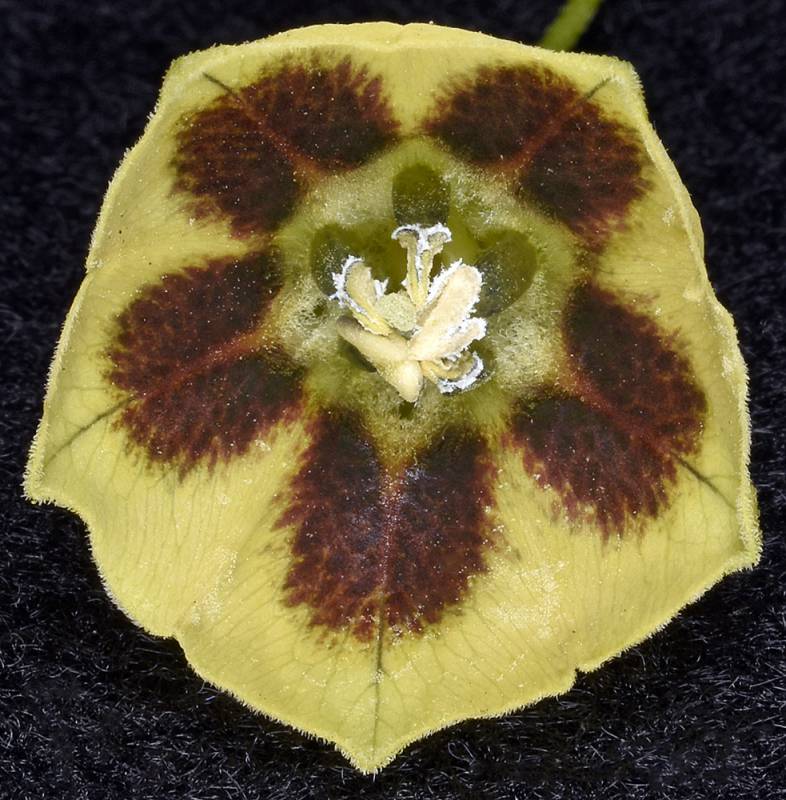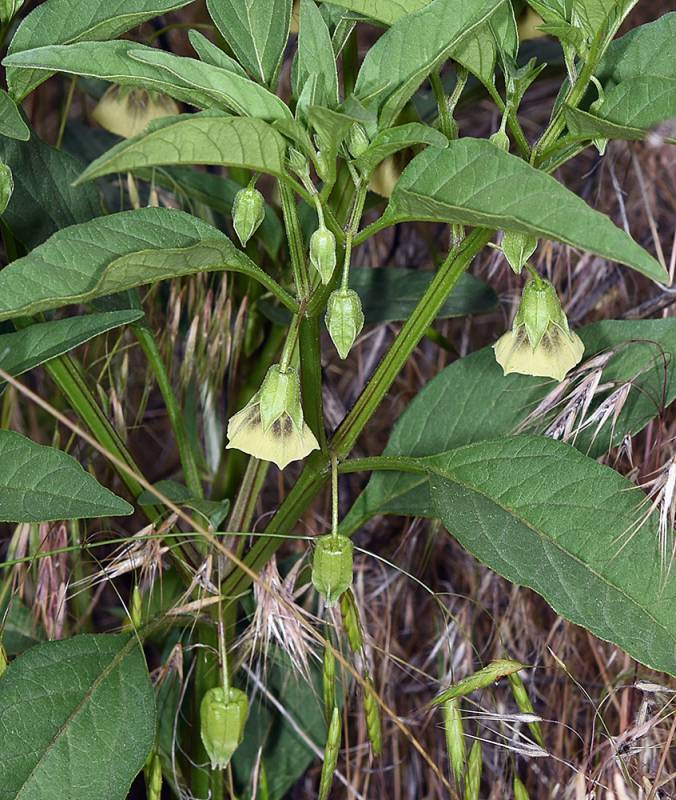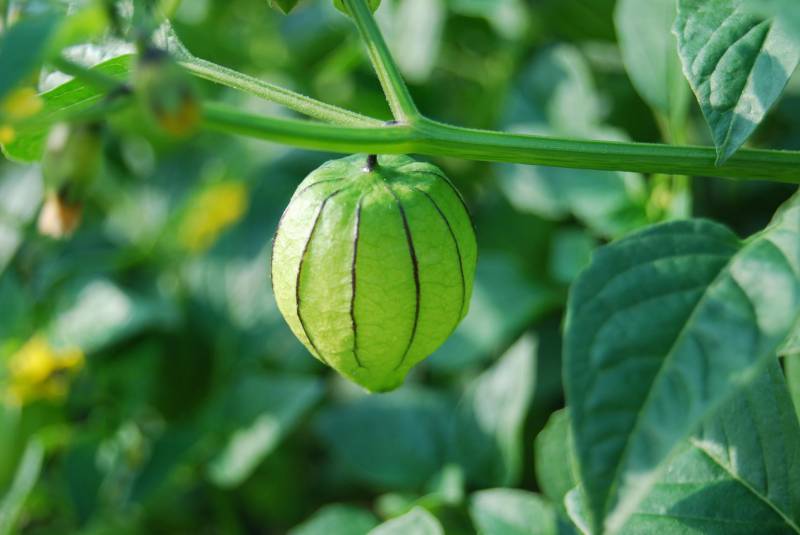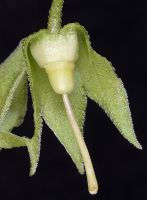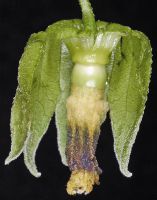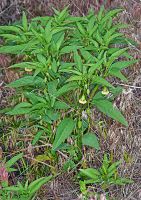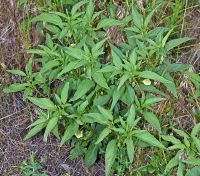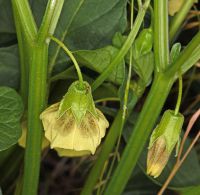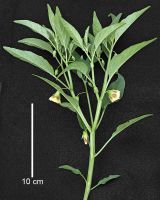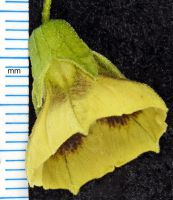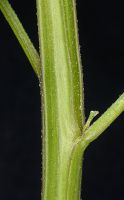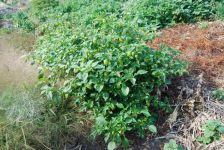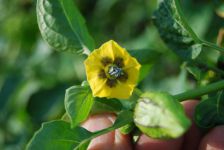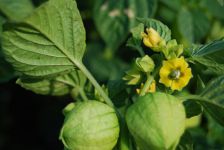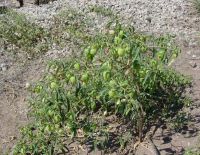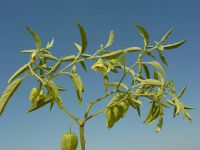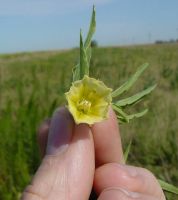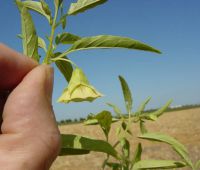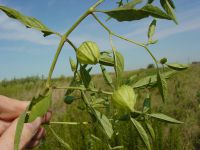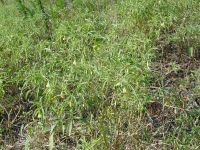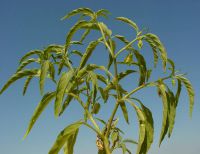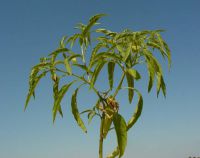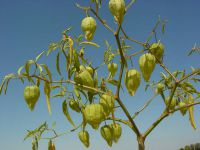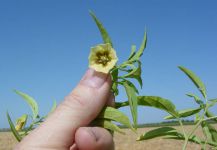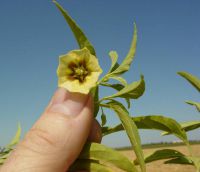Distribution: Occurring chiefly east of the Cascades in Washington; British Columbia to California, east across North America to the Atlantic Coast.
Habitat: Weed of cultivated fields and waste places.
Flowers: June-September
Origin: Both native and introduced
Growth Duration: Perennial
Conservation Status: Not of concern
Pollination: Bees
Perennial herbs from a running rhizome, the stems branched, 2-6 dm. tall, somewhat pubescent.
Leaves petiolate, lanceolate or narrowly rhombic, tapering to the petiole, or broader, ovate, abruptly narrowed to a longer petiole, entire or irregularly blunt-toothed, the blade 4-10 cm. long.
Flowers solitary, appearing axillary or in the forks of branches; calyx small, 5-toothed, 10-veined with hairs along the veins, becoming inflated and papery at maturity, broadly ovoid, 2.5-4 cm. long, loosely enclosing the fruit; corolla 11-17 mm. long and wide, broadly bell-shaped, with 5 short teeth, greenish-yellow with a purplish throat; stamens 5, the filaments flattened, 1 mm. wide; style solitary; ovary superior.
Fruit a berry, 1 cm. thick.
Publication: Trans. Amer. Philos. Soc. ser. 2, 5: 193. 1836.
-
var. longifolia – ground-cherry, long-leaved, wild tomatillo
 Occurring chiefly east of the Cascades in Washington; occurring throughout much of North America.
Occurring chiefly east of the Cascades in Washington; occurring throughout much of North America. -
var. subglabrata – longleaf ground-cherry
 Occurring east of the Cascades crest in Washington; British Columbia to California, east across North America to the Atlantic Coast.
Occurring east of the Cascades crest in Washington; British Columbia to California, east across North America to the Atlantic Coast.
PNW Herbaria: Specimen records of Physalis longifolia in the Consortium of Pacific Northwest Herbaria database
WA Flora Checklist: Physalis longifolia checklist entry
OregonFlora: Physalis longifolia information
E-Flora BC: Physalis longifolia atlas page
CalPhotos: Physalis longifolia photos

